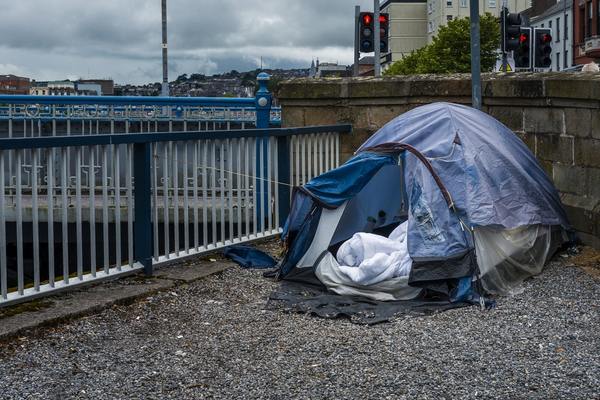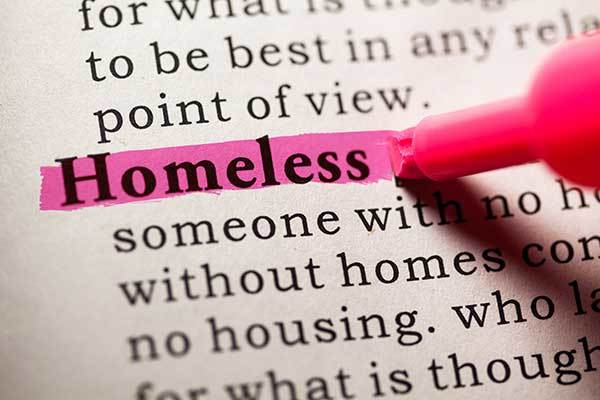You are viewing 1 of your 1 free articles
 Chan Kataria OBE
Chan Kataria OBEChan is the Group Chief Executive of emh group, a housing and care group with a turnover of £125m, 1,100 employees and over 20,000 homes ...more
The answers to homelessness are out there – we must stop ignoring them
The problem of homelessness is growing. The answers are known and what we need now is action, writes Chan Kataria
At a recent meeting of the All-Party Parliamentary Group (APPG), I gave evidence on homelessness in the East Midlands. The facts are stark.
There were 358 rough sleepers in the East Midlands on a single night in autumn 2018 – a 14% increase on the previous year and a staggering 198% increase since 2010. Shockingly, 28 people identified as rough sleepers died in 2017.
This is just the tip of the iceberg and doesn’t begin to capture the extent and scale of homelessness in all its guises.
More than a year ago, as part of the European End Street Homelessness Campaign, EMH Group joined forces with local agencies to do a street count and understand how people got there.
In Leicester alone the volunteers interviewed 93 people who were sleeping out on a very cold night. This story can be told many times over in most of our towns and cities.
The causes are well known. For instance, our volunteers in Leicester found that most of the respondents had mental health issues and that the system had failed to pick them up at an earlier stage. The old adage that we’re all a couple of decisions away from facing a similar fate is true. Some of the people had a relationship breakdown or lost their jobs. Many are refugees with nowhere to go.
The answers are also not new. There is no one solution that fits all circumstances and at EMH Group we are working on a three-pronged approach: prevention, temporary solutions and longer-term solutions.
Our prevention strategies include tenancy sustainment initiatives such as financial advice and support.
Over the past five years, EMH Group’s financial inclusion officers raised £4m on behalf of residents who would have otherwise had higher debts.
We have signed up to the duty to refer under the Homelessness Reduction Act and we are developing customer data and insight as part of a joint project with the National Housing Federation called Hacking Homelessness.
“There were 358 rough sleepers in the East Midlands on a single night in autumn 2018 – a 14% increase on the previous year and a staggering 198% increase since 2010”
The outcome of this project will be a toolkit to help us understand the characteristics of people who are evicted, so that we may prevent this from happening more effectively.
Palliative approaches are also important.
EMH Group has nine short-term hostels to meet the temporary needs of those such as under-25s and single-parent families. These hostels are over-subscribed and over the past year we had 290 referrals for 65 bed spaces.
Such facilities are not long-term solutions, but they can play a crucial role in getting people out of harm’s way and into a safe environment.
The right level of support and intervention can make a huge difference at a critical point in someone’s life.
However, this does require sufficient funding through the welfare system and the uncertainties around the security of such funding are not helpful.
Ultimately, the underlying problem is the lack of access to decent affordable homes for those who need them.
The answer therefore is to ensure that sufficient funding is available to deliver the recommendations set out in the Affordable Housing Commission, which argues strongly for the need for 3.1 million social rented homes over the next 20 years.
In the meantime, homeless households need to be given priority for rehousing in the existing allocations systems.
At EMH Group, in the year to date, we housed around 200 statutorily homeless households in permanent tenancies. This may not be enough, but it’s a start.
We are also pleased to be leading Leicester’s first Housing First pilot in partnership with the city council.
“The development of stronger partnerships is crucial to having an effective and co-ordinated approach to addressing rough sleeping and homelessness”
Our aim is to work with the local authority to provide immediate access to permanent housing for rough sleepers, allowing their needs to be assessed in a safe and secure environment.
As a minimum, the housing sector should adopt the principles set out in World Habitat’s approach to addressing street sleeping.
These include increasing the supply of affordable homes, having a welfare system that provides a secure environment for social tenants and landlords, stronger partnerships, and more funding for Housing First initiatives.
Above all else, the development of stronger partnerships, particularly at the ground level, is crucial to having an effective and co-ordinated approach to addressing rough sleeping and homelessness.
We as a housing sector cannot do this on our own.
What became apparent at the APPG is that this issue transcends party politics.
It is a humanitarian issue and there is consensus that we cannot afford to ignore this crisis in what is the fifth richest country in the world.
Chan Kataria, chief executive, EMH Group
At a glance: Homelessness Reduction Act 2017
The Homelessness Reduction Act 2017 came into force in England on 3 April 2018.
The key measures:
- An extension of the period ‘threatened with homelessness’ from 28 to 56 days – this means a person is treated as being threatened with homelessness if it is likely they will become homeless within 56 days
- A duty to prevent homelessness for all eligible applicants threatened with homelessness, regardless of priority need
- A duty to relieve homelessness for all eligible homeless applicants, regardless of priority need
- A duty to refer – public services will need to notify a local authority if they come into contact with someone they think may be homeless or at risk of becoming homeless
- A duty for councils to provide advisory services on homelessness, preventing homelessness and people’s rights free of charge
- A duty to access all applicants' cases and agree a personalised plan
Cathy at 50 campaign
Our Cathy at 50 campaign calls on councils to explore Housing First as a default option for long-term rough sleepers and commission Housing First schemes, housing associations to identify additional stock for Housing First schemes and government to support five Housing First projects, collect evidence and distribute best practice.













